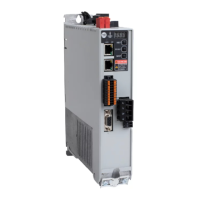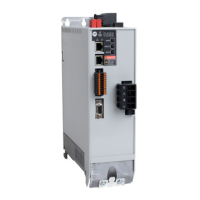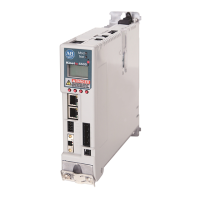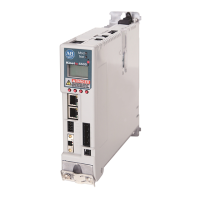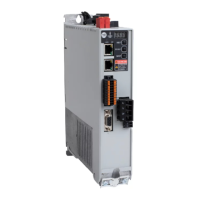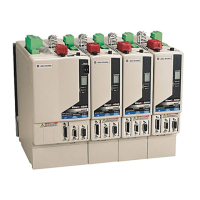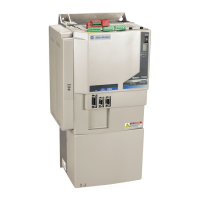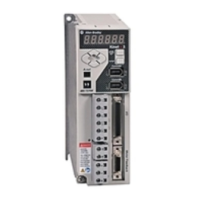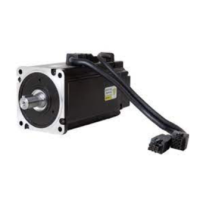252 Rockwell Automation Publication 2198-UM004D-EN-P - December 2022
Chapter 10 Modes of Operation
Torque Mode Torque commands can come from the analog input terminals(COMMAND1-
Torque, 18, Analog GND, 13). The analog voltage (+/-10V) represents a bi-
directional torque signal and is configured with the Analog I/O page in
KNX5100C software.
Torque commands can come from preset torque registers with digital I/O to
select different torque values, the binary weighted DIs represent which preset
torques are selected. These presets can be used with both the T (Torque
Control) and Tz operating mode.
When using IO Mode, the raC_xxx_K5100_MAT Add-On Instruction is used to
provide a constant torque to the motor.
Selection of Torque Command
The torque command origin depends on the Operation Mode setting. Torque
Control mode, Tz mode, and I/O mode can all generate torque commands.
When Torque Control mode is used, an analog voltage is used to generate the
torque command. Presets are also available in Torque Control mode. When the
binary weighted torque preset of 0 is used for the preselected torque, the
analog torque terminals are used for the torque command. When Tz mode is
used, the analog torque terminals are ignored.
Configure and Select the Preset Torques
From the KNX5100C software, you can configure the following.
1. From Function List>Digital I/O/Jog Control, edit the DIO configuration
to add the torque command selection bits (bits 0 and 1)
2. From Function List>Analog I/O, use the pull-down menu for TCM0/
TCM1 to associate the Digital I/O with the appropriate binary weighting.
3. Enter the Preset Torques to use for your application.
Notice that you can change the Preset Torques by using the ID128, ID129,
and ID130 (P1.012, P1.013, and P1.014) respectively.
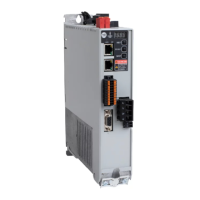
